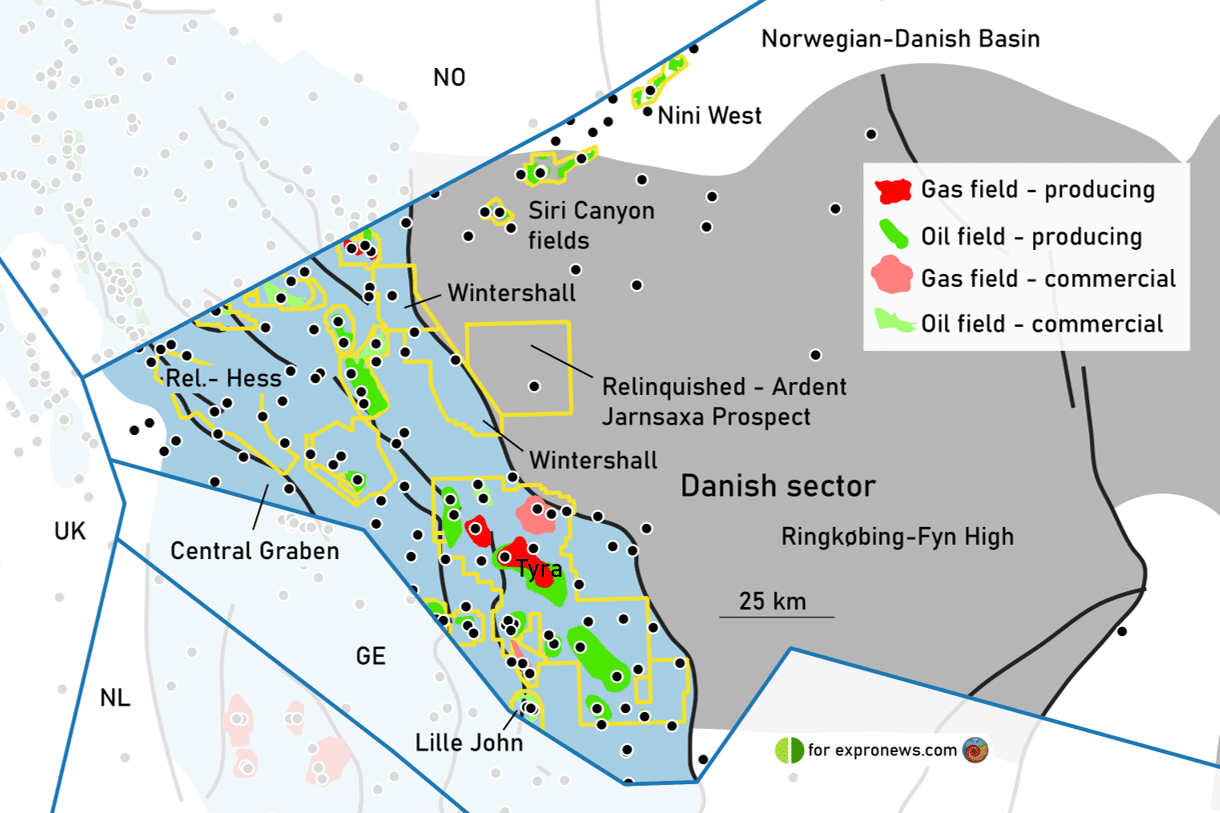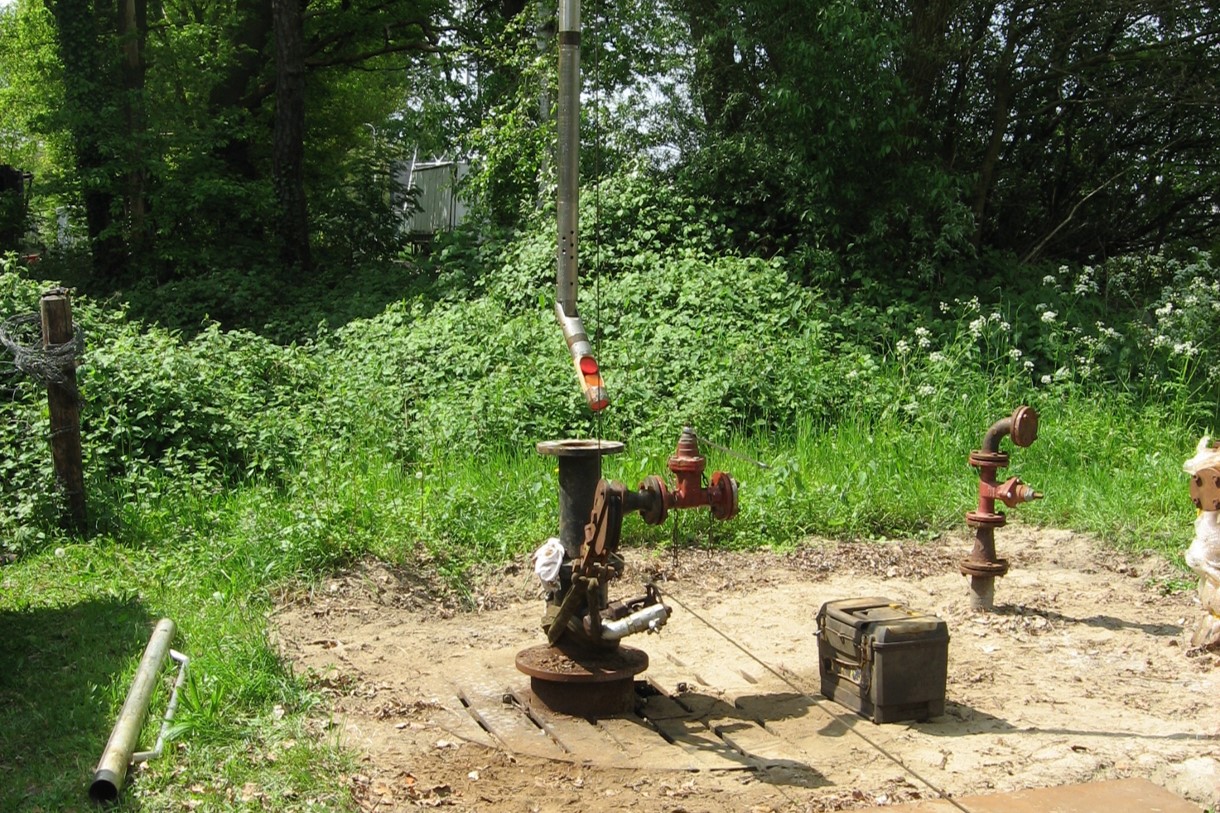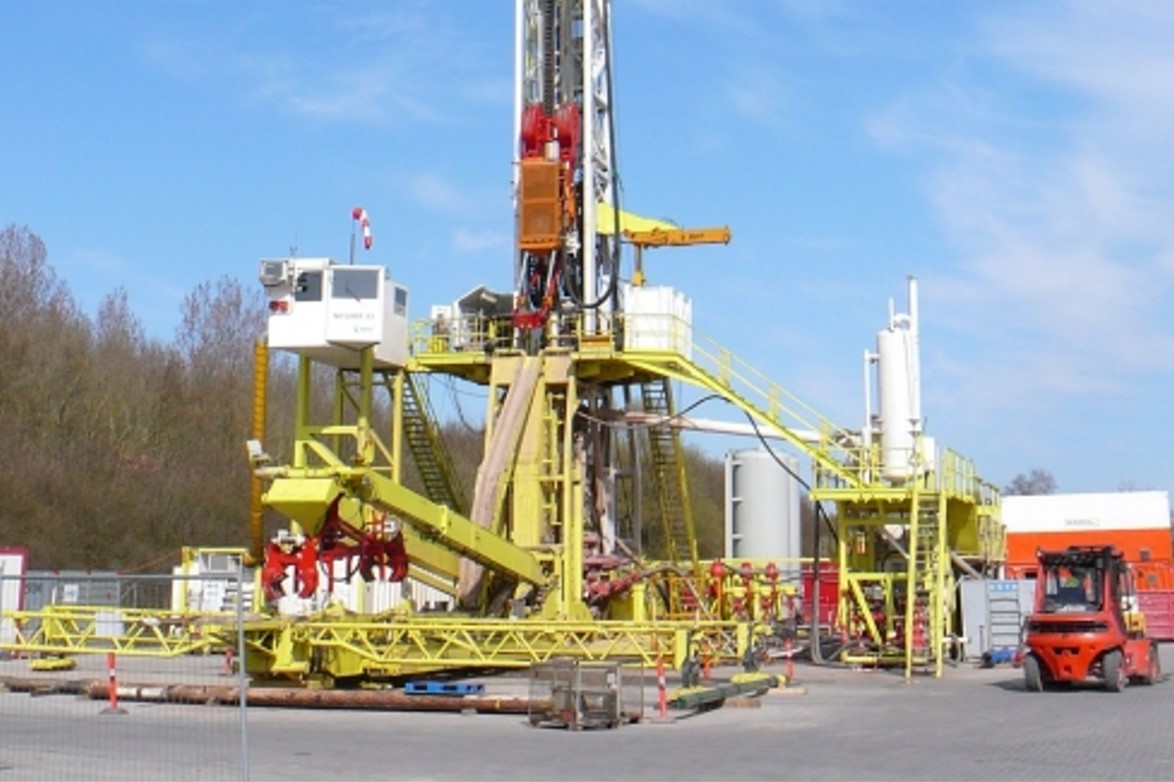With Denmark not only cancelling the 8th Licensing Round but also committing not to hold any future rounds, the country has been featuring in the media since Friday last week.
Another major decision taken by the government is to cease production altogether from 2050 onwards.
This article briefly summarises the petroleum geological setting of the Danish oil and gas fields, the current and recently relinquished licences and also shares the production outlook from the Danish Energy Agency as published most recently in 2018.
Most fields in Central Graben
The majority of fields in the Danish North Sea sector are situated in the Central Graben (see map above), part of the Upper Jurassic rift system that dissects the North Sea from north to south. However, in contrast to the Norwegian/UK sectors in the north and the Dutch sector in the south, most of the Danish Central Graben fields produce from the Upper Cretaceous Chalk.
The question can then be asked; why are there mostly Chalk fields in the Danish sector whilst both to the south and north other reservoir ages dominate? Without trying the answer in full, it is probably a combination of fairly poor Jurassic reservoirs, which has mostly led to uneconomic finds in the Jurassic play, and a favourable Chalk overburden where oil could migrate into fractured closures.
See this article for a play-based approach to Chalk prospectivity mapping.
The second important play in the Danish offshore is the Paleocene Siri Canyon play. This string of oil fields is situated in Paleocene turbidite sands deposited in a canyon system that developed during Latest Cretaceous uplift of the area. This play relies on long-distance oil migration from the Central Graben – the Upper Jurassic Farsund Formation in Denmark is the most important source rock in the area.
Most licences are around existing fields
The map above shows the licence boundaries in yellow. The main message is that there are not many licences without proven fields, which means that there is not much room within the current portfolio of further exploration.
The only exception of reasonable size is the licence currently owned by Wintershall Dea.
Two licences must have been relinquished recently – the Ardent and Hess licences (see map). In the latter a well was drilled last year (Jill-1), targeting a Chalk reservoir, but the well came in dry.
Still present on the Ardent website, the Jarnsaxa prospect mapped in the now relinquished 11/16 licence will now unlikely be drilled. This fractured basement prospect in the footwall of the Central Graben was estimated to hold around 370 MMbo recoverable.
There are only a handful of undeveloped commercial discoveries in the Danish sector. All of those are within licensed blocks, so these could still be developed in the 30 years to come depending the duration of the licence. An interesting undeveloped discovery is the Lille John oil find in Miocene sandstones in the south of the sector, owned by Dana Petroleum.
Production up before it declines

As can be seen in the most recent resource assessment for the Danish sector (2018), the inevitable decline of production started in 2005. It is the light blue part of the graph that has now become more challenging or impossible to add to the resource base, unless some of the prospective resources are within current licence boundaries.
An interesting feature in the graph is the increase in production that is expected in the year 2023-24. This relates to the Tyra redevelopment project that is currently ongoing.
HENK KOMBRINK





